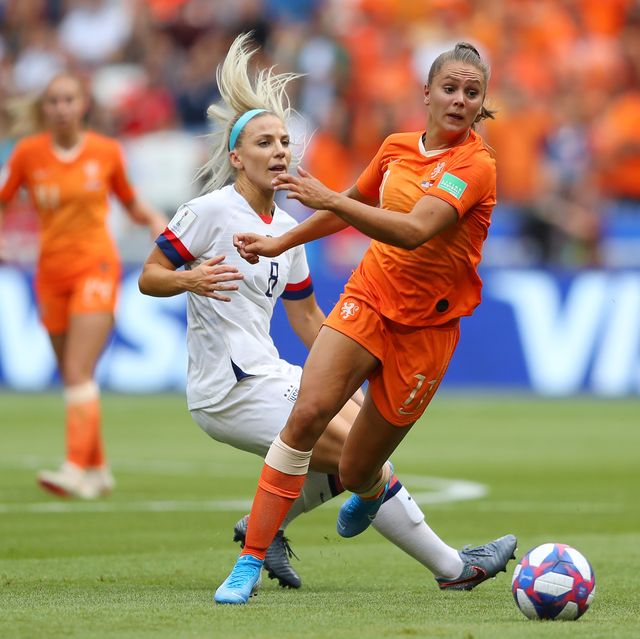The International Football Association Board has specific guidelines for the field of play in a FIFA regulation match. Here's the gist:
The length of the touch lines must be between 100-130 yards (300-390 feet), with a width between 50-100 yards (150-300 feet). In international matches, such as today's World Cup, the length of the field must be between 110-120 yards (330-360 feet), with a width between 70-80 yards (210-240 feet). The width of each line must be the same and cannot be more than 5 inches.
By comparison, the average NFL football field measures 100 yards (300 feet) by 53 1/3 yards wide (about 160 feet). And so, in case there any debates going on in your house right now, a World Cup soccer field is bigger than the field at the Super Bowl.
According to our friends over at Runner's World, a professional soccer player runs an average of 7 miles over the course of a 90+ minute game. They add that midfielders—in the case of the U.S. Women's National Soccer Team: Morgan Brian, Julie Ertz, Lindsey Horan, Rose Lavelle, Allie Long, and Samantha Mewis—may run up to 9.5 miles. (Keep in mind that a half marathon is 13.2!) This is way more than the average football player, according to Runner's World. They estimate that receivers and cornerbacks only net an average of 1.25 miles—only half of a 5K race.
Second to soccer is field hockey, with the average player running more than 5 miles per game. No matter what, we're proud of any athlete at any level for getting out there and competing!
Stay updated on the latest science-backed health, fitness, and nutrition news by signing up for the Prevention.com newsletter here. For added fun, follow us on Instagram.
Devin is the head of content at The Muse and was previously executive editor of Prevention.com. Her work has appeared in Cosmopolitan, The Cut, and SELF.












